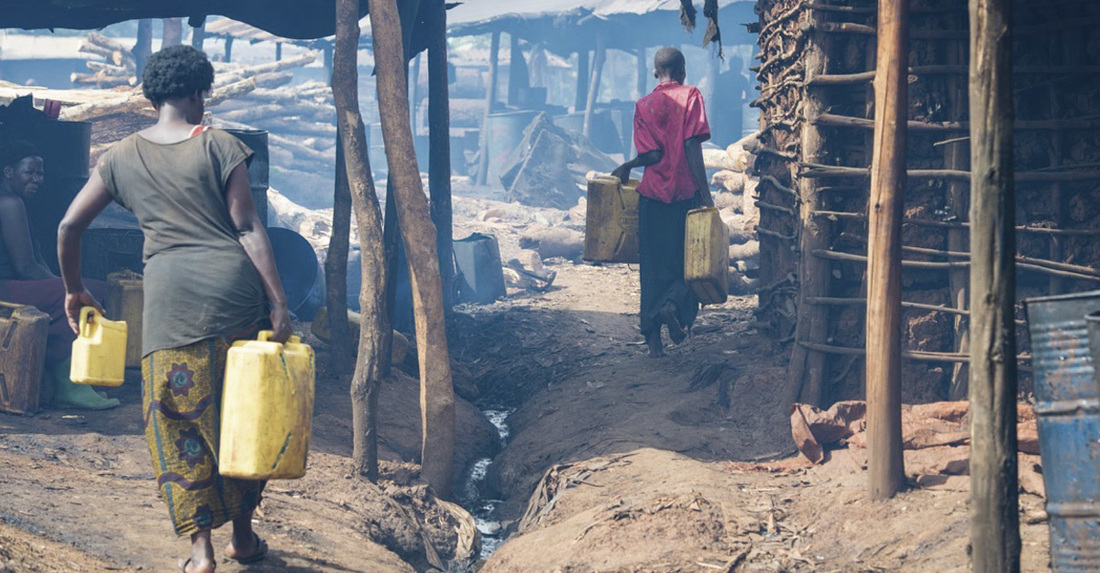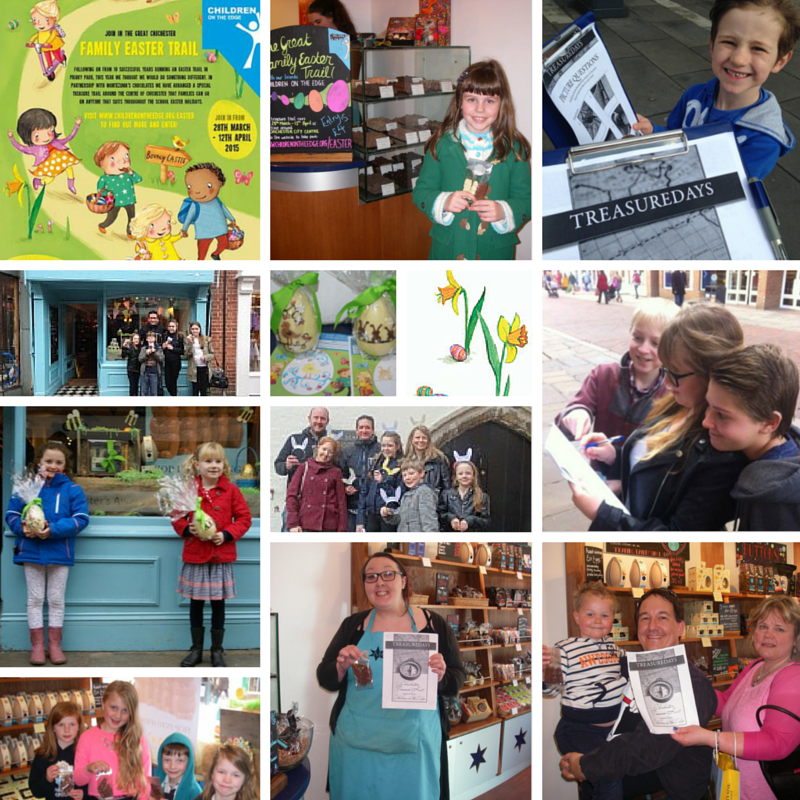|
Building on the success of the current project in Soweto Slum, Uganda, we have been invited to work alongside our current local partner, implementing similar schemes in two larger neighbouring communities, where children are enduring extreme hardship. Like Soweto was three years ago, Wandago is caught in cycles of poverty compounded by destructive livelihoods and alcohol dependency.
Wandago is deemed to be one of the poorest villages in the region with the worst health and education records. The area has extremely poor hygiene levels, malnutrition, infant deaths and a high mortality rate. The village is positioned between two sugar cane plantations and eight out of every ten households are engaged in the expansive illegal alcohol distilling business. Workers at the plantations are exploited, paid a very low wage and forced to work long hours doing heavy work. Child labour here is rife as children are used to cut and carry the heavy sugar cane. Children in this area are at huge risk. A high rate of HIV (including many infected children) has resulted in a large number of orphans and grandmother headed households. 60% of children are out of school and, largely because of a busy main road running through the centre of Wandago, these children are vulnerable to child trafficking and child sacrifice. With no safe places to go in the community, another issue here is the number of young girls getting pregnant. As they wander around with nothing to do and no parental care, they are extremely vulnerable to the approaches of men and sexual abuse. Even for those attending school, a high proportion fall pregnant before they complete primary level seven and most community members simply view this as a normal practice. Unsurprisingly, due to the amount of abuse, young girls here have increasingly low self esteem, further heightening the danger of their exploitation. A group of men from Kampala regularly visit the community and take young girls to Kampala, trafficking them as sex slaves. What we’ve done so far
In the community of Wandago we will be working with our local partners to further establish the Community Child Protection Committee. We will then move on to the development of a Child Friendly Space providing education, nutrition and play in each area. Finally we will then focus on agriculture, sustainable livelihood schemes and vocational training for young people. All these activities will have an overarching focus on early childhood development, child protection and empowering women. These projects will enable communities to take responsibility for their own environment, creating a safer place for children where their needs are met and rights protected. All the components will work together to provide children in Wandago with the opportunities, skills and support that will enable them to develop into healthy adults that can enter into constructive livelihoods and achieve their potential. We look forward to updating you on our progress. Photo courtesy of AJ Heath Photography Training teachers from within refugee settlements in Lebanon is enabling children in the camps to to thrive in their education by learning in their own language, with their own curriculum and with teachers who empathise with the trauma they have been through. In Lebanon we are working with a local partner to develop education programmes that support the needs of an incredibly traumatised refugee community. We run camp schools that use an interactive curriculum, taught in Arabic and based on Montessori techniques that use aspects from both the Syrian and Lebanese curriculum. This ensures that children can re-engage with learning and also develop the capacity to integrate into both societies. Using Syrian teachers is vital We work within refugee communities to identify members who have some form of education and train them to teach. The fact that teachers speak the same Arabic dialect as their students results in vastly more effective communication, compared with a situation where children are forced to struggle with an unfamiliar language. Syrian teachers also know and understand the culture of the children they work with. Many have been through similar experiences and traumas to their students and are able to empathise with the situation they find themselves in. The teachers are avid learners with genuine dedication to being a changing force within the camps. Teacher training is not only providing them with livelihood opportunities, but a strong sense of project ownership in educating their own community. Since the outset of our pilot we have seen children and communities in Bekaa Valley thrive. Children are fully engaged with learning and several students who started out timid and afraid of making mistakes have flourished. The games and interaction with teachers has created a comfortable, fun environment and the children are inspired to excel. Hala’s story Hala was about 8 years old when she started attending our school. It was her first time in a class, as until then she had stayed home helping her mother with housework. It took Hala a long time to adjust to the school environment. She was argumentative and would leave whenever she felt like it. She wouldn’t obey teacher's instructions if they didn't suit her and didn't understand why the other girls were so keen to excel both academically and behaviourally. Why try to impress the teacher? What's the point? Hala was behind academically and, though she is bright, she always took at least a half hour longer than her peers to complete assignments. Her teacher, Ahmed finally sat her down and chatted with her. Speaking the same language meant the flow of communication was easy and he was able to lay down some boundaries for what was and wasn't allowed in school. He was also able direct Hala's gaze to some of the female students in her class who were doing really well and could be a good role model for her. He could explain about what inspires them to learn. After this time, she really took off academically. Hala now has a real knack for seeing the big picture, asking good questions, and "translating" for others, whether that's helping a teacher explain themselves, or helping her peers understand the task at hand. We've seen her natural spark and confidence shift towards something productive and beneficial for herself and others. There are many, many stories like this, that demonstrate how crucial it is to have Syrian refugees teaching Syrian refugees. Consequently we are looking to scale up and create more schools which implement these methods in other refugee camps throughout the the Bekaa Valley area. Find out more about the project Donate to our work For the past 10 years we have been running a successful Easter event in Priory Park, this year we thought it would be good to try something different.
Working with Montezuma’s Chocolates we piloted a Family Easter Trail around the Chichester City Centre which ran through out the school holidays. The questions were based on a range of topics from historical facts about Chichester to spotting local attractions. The trail began in Eastgate Square and wound its way around the town centre with the end point at Montezuma’s Chocolate store where participants could claim their well deserved prizes! The lovely staff at Montezuma’s had the important job of handing out chocolate bunnies to some (very happy) children. Tash, a sales assistant at Montezuma’s, helped manage the trail in store and met some of the participating families. She described how “The trail has been very popular with both children and parents. It’s been great seeing all the excited families coming in to claim their chocolate. We have also had a lot of local people mentioning they enjoyed discovering some new facts about Chichester.” Many individuals doing the trail were not just from Chichester but had travelled down especially to take part. Tash explained “ we met a lot of customers who lived far away and came to Chichester to take part with their families. Some individuals came from London and we even had one family all the way from America complete the trail”. In the run up to the trail, hundreds of local school children also entered a competition to design their own Easter egg. The winner had their designs made into real chocolate eggs by Montezuma’s. We’d like to say a big congratulations to winners Isla and Effie, who both created beautiful designs. We are thrilled to have received so much support for our first ever Easter Treasure Trail. Altogether we sold 205 tickets raising over £800 which will contribute to all our international projects. We would like to say a huge thank you to everyone who took part in the trail and all the amazing staff at Montezuma’s. Watch this space next year as we’ll be back with the next Great Chichester Family Easter Trail again, but it will be extra child friendly, even more fun and we’ll be integrating some ways of learning about our work with children all around the world. We’ll also be looking to get lots of favourite local shops to join in, so if you run a store in Chichester and would like to get involved, then get in touch.  There are now so many different ways to fundraise, from the traditional bucket collection to text donations. Charles, a digital and social media marketing student, has created an innovative website which allows individuals to donate to Children on the Edge by simply doing a spot of online shopping. BrightSearch.org works when individuals visit the site and search for a retailer or the name of a product that they wish to buy. The website hosts over a hundred retailers including big names such as Ebay and Amazon. Once you are on the retailer’s website and purchasing your goods, a percentage of what you spend will donated to Children on the Edge. It really is as simple as that. When Charles noticed a lot of cashback sites popping up he had the idea of creating a charitable version. Working with two partners, BrightSearch was created in just over a year. The next big decision was picking the right charity to benefit from their first fundraiser. Charles specifically wanted to support a children’s charity, and after a little searching he found, and fortunately took a liking to us. “I wanted to find a children’s charity that didn’t have thousands of social followers” explained Charles, “Children on the Edge looked perfect as it was small and looked very dedicated to all the good they are doing”. The team at Children on the Edge would like to say a big thank you to Charles for all his wonderful support. To help Brightsearch develop and gain donations simply visit brightsearch.org when buying online. Happy shopping! The tragedy facing the Kachin people in Myanmar (Burma) is rarely cited in the international media and runs counter to the popular narrative that the country is steadily transforming into a democracy. In truth, the scale and nature of the needs for internally displaced Kachin children is vast, urgent and critical. At present, Children on the Edge is the only international organisation reaching these isolated children, in the hard to reach areas of the state.
While conflict in Kachin State dates back decades, the past three years have seen the most intense and brutal fighting. Camps for over 120,000 people displaced by the war continue to grow in both size and number, and those seeking refuge are increasingly downcast about how unlikely the prospect of returning home has become. On his visits there, John Littleton, our Asia Regional Manager has witnessed first-hand the indiscriminate bombing of civilian villages by central government forces and spoken with dozens of victims who have been forced to flee their homes. He describes how “Those I’ve spoken to speak of wide-spread burning of villages, rape, maiming and executions. As the central government appears determined to crush this last remaining pocket of wide-spread armed resistance in Myanmar, their tactics have been increasingly harsh”. Reaching the unreachable While there is broad recognition of the pressing humanitarian need in northern Kachin State, it seems that the prevailing opinion is that there are simply too many logistical obstacles to providing support there. Most of the roads are little more than crude, unpaved logging routes, cut through dense forest and steep terrain. In order to reach the most remote Internally Displaced People (IDP) camps, it is necessary to criss-cross the Chinese and Burmese borders sometimes more than once. Consequently, Children on the Edge finds itself alone in providing assistance to these outlying communities. Despite access and supply issues proving challenging, they are not insurmountable. Children on the Edge has therefore been providing support to displaced children in Kachin State since 2012. We have been focussing on seven, northern (IDP) camps, which are situated in high-altitude locations. These settlements have been ignored by the larger organisations who have concentrated their efforts on the easier to reach locations around Laiza. Because of the high altitude of these camps, temperatures regularly plunge well below freezing. Given that many of the IDP residents fled their villages with only a handful of belongings, winter supplies to survive these conditions are scarce and there is a particular lack of warm clothing. During our first site visit to Kachin in January 2012, we visited a village where a young child had recently perished due to hypothermia. In response, our first action in Kachin state was to purchase hundreds of sets of warm clothing for children. Education and traumatised children The next step was to create some activities that would build sustainable change. Together with our local partners Kachin Development Group (KDG) and Kachin Women’s Association (KWA), our full Early Childhood Development Programme was launched in November of 2014. This programme consists of 12 Early Childhood Development (ECD) centres in the seven remote IDP camps, reaching 554 displaced Kachin children. While some community buildings already existed in the camps, most were unsuitable for use as an ECD space and extensive renovation work was needed. Complicating these efforts, the purchase and movement of building materials in such remote areas is difficult due to poor roads and arbitrary security checks. The most outlying IDP camps take more than 11 hours to reach from the nearest supply points. Thankfully, all 12 centres received the needed materials, and the structures were ready before the arrival of severe winter weather.The centres have become real child friendly spaces which provide play, early years education, creative expression and training in health and hygiene. Through these centres we are working with communities who have faced very real and sudden trauma. Children in the camps have experienced the shock of being forced from their homes under a wave of brutal violence and many of the personal accounts collected in the field are too graphic to publish. In the knowledge that many of the children carry significant, residual trauma, the 10 teachers in the centres have not only been trained in child friendly curriculum development, child protection issues, and managing logistics but are highly focussed on providing a safe space in which the children can feel secure to express themselves. The aim of the programme is to help the children regain a sense of security and self-worth while facilitating their long-term recovery and well-being. Community ownership Each centre is supported by a committee comprised of parents and community leaders. These committees help organise support for the centres and deal with any problems that arise. The group also assists with providing labour for construction and maintenance of centres, as well as arranging for volunteer cooks and cleaners. At monthly meetings, the committees talk with teachers and staff about issues related to the centre and broader community. These round-table discussions strongly connect the project with the community and enable valuable insight into the ongoing issues faced by the IDPs. How you can help Donate to the project - Funding is surprisingly hard to find as many donors simply aren’t aware of the scale of this situation. Contact your MP on behalf of the Kachin people - While there have been measurable strides taken towards progress in Myanmar, the atrocities and violations of human rights taking place in Kachin state and surrounding areas is evidence that the old regime has yet to fully reform. It is time for the international community to take notice. Related stories: 'Their villages burned and their families attacked, the Kachin People have been physically pushed to the edge of their country and given no help' Share this story - to raise awareness (use the Facebook and Twitter buttons below) |
RECEIVE OUR EMAILSBlog Categories
All
Archives
July 2024
|
|
JOIN US ON SOCIAL MEDIA
|
Annual Report | Contact Us | Jobs | Media Centre | Resources | Shop
Accessibility & Policies: Accessibility | Equity, Diversity & Inclusion Policy | Complaints| Privacy Policy | Safeguarding
Accessibility & Policies: Accessibility | Equity, Diversity & Inclusion Policy | Complaints| Privacy Policy | Safeguarding
Children on the Edge, 5 The Victoria, 25 St Pancras, Chichester, West Sussex, PO19 7LT, UK | 01243 538530 | [email protected]




 RSS Feed
RSS Feed
